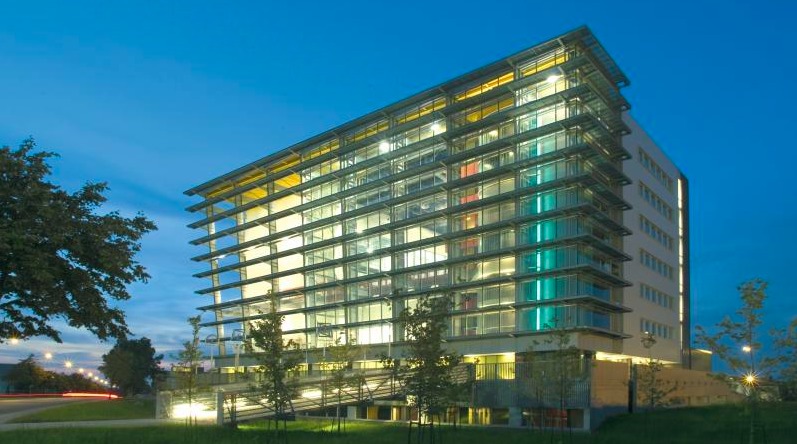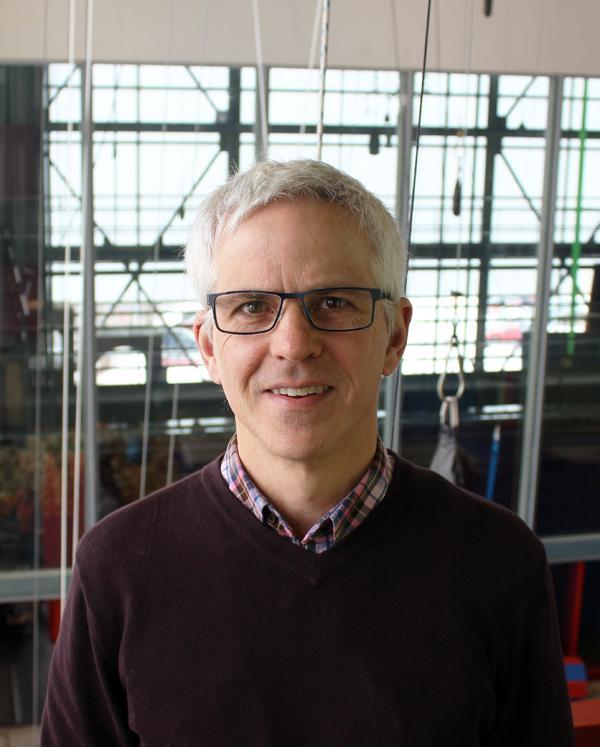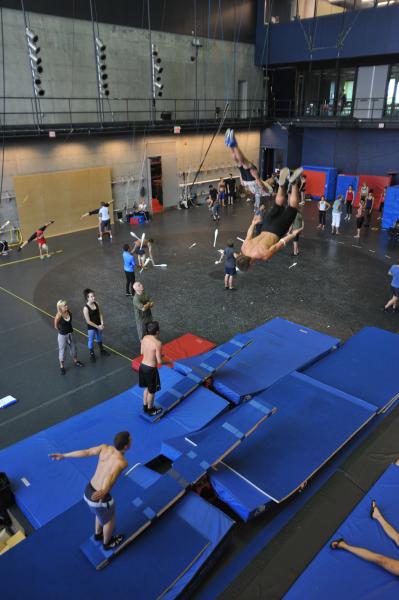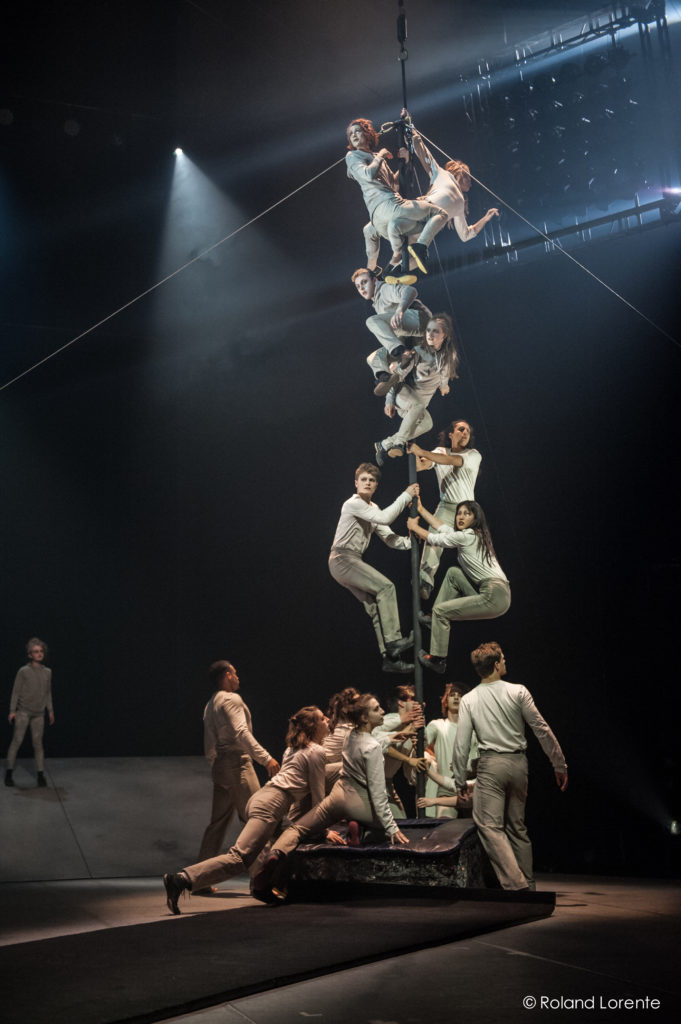How Ecole National de Cirque Keeps That Competative Edge

As one of the foremost circus institutions in the world, École national de cirque (ENC) is gifted with many resources, among them an auspicious location (at the center of Circus City, an essential part of a trio of three circus institutions TOHU, Cirque du Soleil and the school itself, each nourishing the other in the ultimate backscratch train). Other gifts include a comprehensive and experienced staff, ample government funding, a world class facility and an impressive resource library. Thus for 37 years, ENC has been able to unleash some of the most vigorous and versatile circus artists on the planet, to establish its own school culture and to contribute to the Quebec circus style and burgeoning circus culture.

But in many ways, executive director Éric Langlois admits, ENC is somewhat isolated, based partially on geography (although the circus school and Circus City itself is balanced and complete it really has no other peer on the continent) but also based a bit on design. Keeping his school mission as his priority, Langlois doesn’t jump into collaborations willy nilly but rather thinks them through like a sovereign nation would, making sure that the perks outweigh the potential loss of advantages that ENC has worked so hard to attain over the years. Still, the charms of an elite institution may not hold the same weight in an era of burgeoning artistic expression–when grassroots festivals, small scale circus companies and cross-cultural residencies have been recognized as methods to liven up the art form–and since the imperative is built in to ENC’s mission to be a leader in innovation, Langlois is guiding the team in multiple directions on many fronts toward that aim.
Keeping that Edge
“So you cannot learn to be creative, but you can learn how to be innovative. We have to bring it to the students in our courses. They learn how to master that,” Langlois explained as I sat in an office board room with him one winter afternoon. He says that once students have mastered their discipline, they will be able to recreate themselves with an edge. “Especially because we’re in a context where things are going so fast. People have access to new stuff constantly. So it puts additional pressure on at a younger age. This issue about innovation and creativity is definitely central,” Langlois says.
One of the ways ENC addresses the issue of creativity and innovation is by defining itself as more than a school. “It is seeing ourselves more like a center, especially with all of our research activities. It’s also a way to express loudly the place of the document center and library. It’s narrowly related to the research projects and activities in the community. It’s there that we have more and more visitors, more researchers that are coming and asking for support.”

Their mission to act as a source of research and innovation in circus and pedagogy is accomplished with programs like CRITAC (Center for Circus Arts Research, Innovation and Knowledge Transfer) where they work with an extended network of circus professionals. CRITAC approaches research from six different fields; technological innovation (through the development of equipment, costumes, accessories, and scenery specific to circus disciplines), circus arts teaching, the writing and dramaturgy of the circus arts, adaptation and application of new interactive and immersive technologies to the circus arts, health and safety in the practice of circus arts and history and aesthetics of the circus arts. This past June, CRITAC was welcomed as a (CCTT) College Center for Technology Transfer by Hélène David, the minister responsible for Higher Education and the Status of Women.
One of the challenges that keeps ENC busy is trying to find ways to develop its preparatory training in Canada so that more graduates will come from the region. “In Canada, preparatory programs are under-developed. There’s more recreational circus than preparatory programs and this is quite an issue for us in Quebec and in Canada, and for this school because we have problems to recruit well prepared candidates that are coming from Quebec that could be fully-financed by a minister of education. For financial reasons, we should tackle this issue. Our mission is to train Canadian and to train Quebecoise– we’re well financed by both the levels of government. So we have to fully play our role there.” In fact, ENC’s role has been recently recognized in the form of a grant of $1 million (to be spent over the course of five years) from the Ministry of Culture and Communications. The funds will go towards promoting the practice of recreational circus arts with young people and advancing the offer of preparatory circus arts training in Quebec. In a recent press release from ENC, they stated how helpful this would be in helping them fulfill their mission, “This new financial injection will support National Circus School with the transfer of expertise in pedagogy, risk management and teacher training. By extension, it also will benefit the entire recreational and preparatory circus sector.”
Mindful Collaboration is Key
Perhaps it is this prioritization of developing a strong preparatory program in Canada that keeps the attention of the school a bit more focused on the home front than on international collaborations. But Langlois also has a healthy dose of skepticism about collaboration for its own sake, even as he acknowledges the benefits of the trend. For example, discussing the merging of competitor schools with university partners he says“ So, in a way it’s forced. What they are getting for what will come out of that we don’t know. But also, generally speaking, we’re certainly mutualizing our resources these days.”
What we want to develop is a program that goes abroad, to go into a community where there’s a need and where there’s enough individuals that want to get into the program.
Langlois says that when traveling to international circus events and schools he is often approached with a simple question,“Do you think it would be possible that you come over with one of your teachers?” Until recently, he has been referring prospective teachers to their teacher training program. But upon reflection, he thinks ENC may have something to gain from such collaborations as well as to give. “What we want to develop is a program that goes abroad, to go into a community where there’s a need and where there’s enough individuals that want to get into the program. We went in western Canada earlier this year. We’re planning to go to Dublin, Ireland in 2019 led by a graduate from our training for the coaches program.” He is quick to note that such exchanges would also benefit teacher morale at ENC and refresh their perspective on their work environment.
Another collaboration that ENC embraces is being a member of FEDEC. “This is a very strong partnership that that keeps us in contact with the network. We work together on very specific issues that are good for the whole network. It’s also an occasion to use a platform where the teachers can meet, the managers can meet and where the students can meet.” He says it’s important because “There’s very few schools in North America that we can network with that would bring circus of an experience level similar to what we’re doing here.”
Langlois doesn’t shy away from the fact that competition arises among schools. He described the challenges of navigating such a complex relationship with a school located just 255 kilometers away, “When Ecole de Cirque de Quebec asked for the recognition as a college program, we battled against this, saying that there’s no preparatory schools in Quebec–so there’s not enough clientele for two schools. Five years later, they’re still there. They’re there for good. So what do we do now? Where should we collaborate and on which subject and topics? For example, last week we met over the research issues and asked the school if there is something for you in the research and would be you be interested in collaborating? It’s a way we can open up to collaboration–by keeping the competition as our main objective but finding fields where we can collaborate wherever we can open up to the interest of the whole system.”
But sometimes the growth of a field means unexpected challenges according to Langlois, “A big issue is with the blooming of new schools all over the world is that we are in competition for teaching resources,” which is another reason why having a world class circus educator’s program and offering incentives for instructors with opportunities to travel abroad is so appealing to ENC.
Somehow as a school, exactly what we bring on the scene is what is on the market, it finds its place and its public, then that’s what is contemporary. If we put the condition there, then we do this circus of tomorrow. We have a very strong influence on what will happen later on.
Staying Relevant & Flexible
One of the side effects of setting industry standards is that ENC bears a lot of the responsibility in shaping the tone and direction of the art form. Recently the arts world, like the rest of the world, has been called on to question its willingness to accept and allow for diversity–racially, ability-wise and gender-wise. Early recreational and preparatory programs surely bear some of the responsibility for not providing for as diverse a group of emerging circus artists as possible, but Langlois recognizes that the struggle needs to be addressed on multiple levels–and the weight of ENC’s approach will have impact. Still, he grapples with the notion of balancing artistry and diversity with high technical standards, and listening to him talk through it–it becomes clear that it must be an ongoing discussion among the educators as well. “We can have years when we have majority of women– if we’re still talk talking binary–and another year when we have a majority of men. It depends on the talent we have there. What leads us so far is your talent, your physicality–if we consider that you have the attributes and that you have a singularity to bring to the world as an artist.”

“An issue where it’s sensitive, is the body–what you look like and if you have someone who’s not lean in form, but have other skills worth taking into consideration, there may be a bias, right? I think it’s something we should look at and question– is this biased? If this is a bias–when you’ll get on the market, will there be a place for you? Which is honest, but it also brings up the question of diversity of the arts.” Basing the selection process on the perceived ability to master technique versus identifying strong artistry–this balance is clearly a tricky one, but Langlois feels they are moving forward.
“The forms of circus are opening up. The diversity there is opening up opportunities. So what we think is, how do we support and develop them so they’ll find their way and their place in this very diverse world? Somehow as a school, exactly what we bring on the scene is what is on the market, it finds its place and its public, then that’s what is contemporary. If we put the condition there, then we do this circus of tomorrow. We have a very strong influence on what will happen later on.”
Fulfilling the Mission
The mission of ENC is complex, as an educational facility, it does more than prepare the next generation of contemporary circus artist. It also prepares the educators themselves, and conducts research with the wider community that pushes forward innovation in circus. Along with the other major circus schools, ENC helps set the industry standards for graduates and begins to create the diverse market of circus artists and companies that populate the shows and festivals around the world. There is a recognizable level of world class technical finesse to any graduate of ENC, and Langlois is proud to admit “There’s a culture, whatever school you leave, you leave with a culture, a way of doing things and we have our way and the other schools have their way.”
Feature photo courtesy of Alex Le Gault for ENC
Editor's Note: At StageLync, an international platform for the performing arts, we celebrate the diversity of our writers' backgrounds. We recognize and support their choice to use either American or British English in their articles, respecting their individual preferences and origins. This policy allows us to embrace a wide range of linguistic expressions, enriching our content and reflecting the global nature of our community.
🎧 Join us on the StageLync Podcast for inspiring stories from the world of performing arts! Tune in to hear from the creative minds who bring magic to life, both onstage and behind the scenes. 🎙️ 👉 Listen now!
